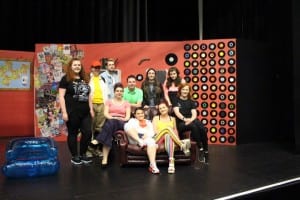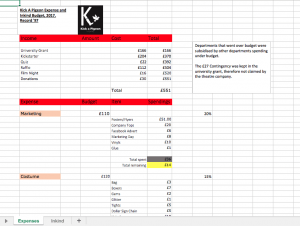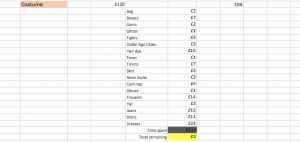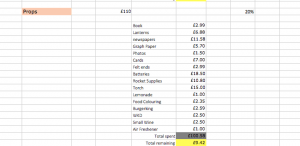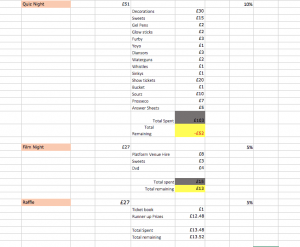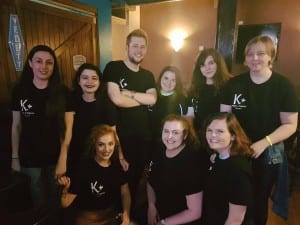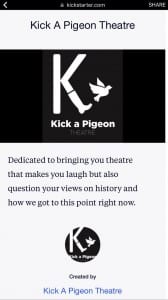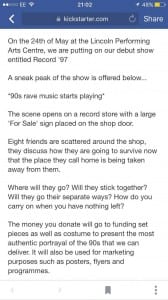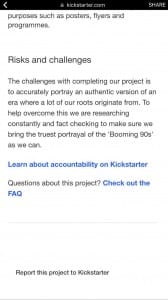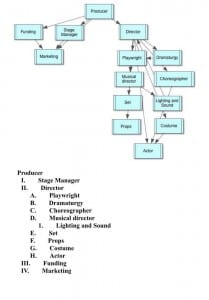After a long and gruelling rehearsal period, tech day had arrived. The company as a whole were anxious about how successful our tech would be. The week leading up to our tech rehearsal had consisted of long rehearsals, where we re-directed a vast amount of the show, painting the flats and pushing the promotion of the show.
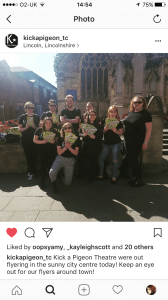
Figure 1: promoting the show in Lincoln city
Due to our intricate set and props the company was unable to have a full tech rehearsal, instead we had to opt for a que to que run instead. Due to this the company’s nerves grew further, with many of the company questioning how successful our show would be. Reflecting back on our tech day, there would have been time for a full run if each member of the company helped set up the flats, set and props. The tech day was one of the most stressful days of this journey for me, due to my role, I spent a lot of my time behind the scenes emailing, filling out the documentation and working on the budget, so assisting in building the set was a challenge for myself. After the tech day, the group made the joint decision to up our rehearsals during the week before our show, as we wanted our debut performance to be a success.
Before I knew it show day had arrived. The company arrived at 9am for the initial set up. Myself, Paige, Kim, Amy and Jack were hoping for a fast set up, however the whole company did not contribute to the set up, which slowed down the process. Panic stuck as several items had been forgotten but fortunately between my self and Paige we were able to drive and collect the missing items, though again this had a negative effect on our set up process. As a producer, I expected my role to be calmer during the show day. I had already arranged for a photographer, Rebecca Nobble, to photograph our dress run and been promoting the show. But being one of two non acting members, I was asked to assist back stage with the costume changes and became the makeup artist for the cast. This meant I was unable to watch the runs from an audience perceptive and comment on changes needing to happen.
Reflecting back on this process now I would have vetoed the two full on runs the director requested before the show, as Mo, who played the character Alex, had a bad case of tonsillitis and had slowly been loosing her voice. Also, majority of the cast did not want to do two full on dress runs, as this left little time for every member to make any finishing touches to their costume or makeup and left us with a mere thirty minuet break after a long, hot and stressful day.
Despite the challenges the company faced, our production had been a success with the audience, receiving some brilliant reviews on social media. We were relived that the audience found the performance comical. However, I feel as a company we did not always work as one unit.
As a producer, I would I have liked to have worked closely with the whole company but due to the size of our company and the various roles this was not possible. ‘As the production manager will have worked closely with the director, the designers, and the performers’ (Dean, 2002, 8) yet I found it was the marketing team, set designer, writer and stage manager who I worked with the most due to us requesting each others assistance or for a second opinion. It was not until the last few weeks of the process that I started engaging more with the director and actors after it became clear a fresh set of eyes was needed during the rehearsals and re-directing process.
If I were to re-do this whole process, I would work within a smaller company, I found from this journey that working in a theatre company of ten members often led to clashes of personalities and opinions. I believe this company would have worked successfully with five production members, with the actors auditioning for the show if and when we tour the production.
Works Cited:
Dean, P. (2002) Production Management: Making Shows Happen. Wiltshire: The Crowood Press Ltd.
Figure 1: Kick a Pigeon Theatre (2017) Record ’97. [image] Lincoln Performing Arts Centre: Kick a Pigeon Theatre.
Figure 2: Kick a Pigeon Theatre (2017) Record ’97. [image] Lincoln Performing Arts Centre: Kick a Pigeon Theatre.
Figure 3: Kick a Pigeon Theatre (2017) Record ’97. [image] Lincoln Performing Arts Centre: Kick a Pigeon Theatre.
Figure 4: Kick a Pigeon Theatre (2017) Record ’97. [image] Lincoln Performing Arts Centre: Kick a Pigeon Theatre.
Figure 5: Kick a Pigeon Theatre (2017) Record ’97. [image] Lincoln Performing Arts Centre: Kick a Pigeon Theatre.
Figure 6: Bailey, N (2017) Reaction on Social Media. [image] Lincoln Performing Arts Centre: Natasha Bailey.
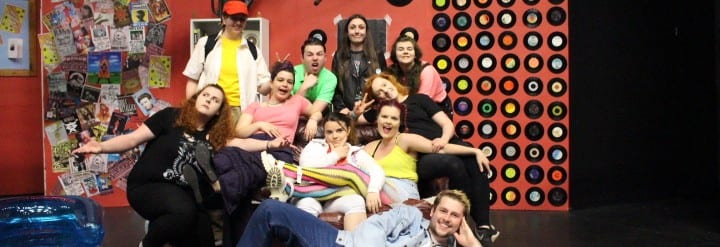
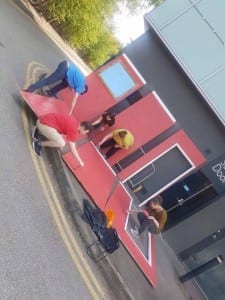
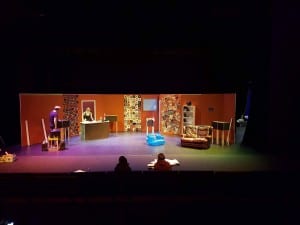
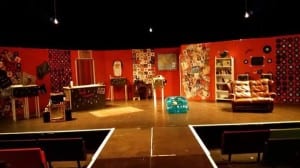 Figure 4: Set
Figure 4: Set
